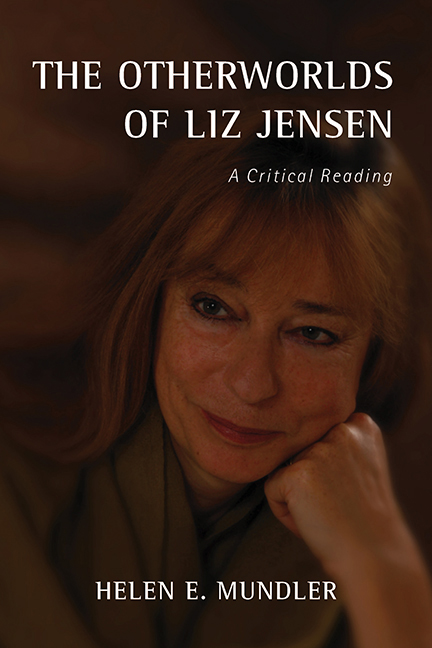Book contents
- Frontmatter
- Dedication
- Contents
- Acknowledgements
- List of Abbreviations
- Introduction
- 1 Egg Dancing: Paving the Way for Otherworlds in Time and Space
- 2 Ark Baby and the Return to the Nineteenth Century
- 3 Island Life: The Pure “Ustopia” of The Paper Eater
- 4 Liz Jensen's Murder Mysteries
- 5 From Family Romance to the Detective Novel
- 6 New Rules, New Otherworlds: Jensen's “Third Wave”
- 7 Ecofiction, Rapture Fiction
- 8 The Uninvited: The Most Radically “Other” World to Date
- Conclusion
- Notes
- Bibliography
- Index
6 - New Rules, New Otherworlds: Jensen's “Third Wave”
Published online by Cambridge University Press: 09 May 2017
- Frontmatter
- Dedication
- Contents
- Acknowledgements
- List of Abbreviations
- Introduction
- 1 Egg Dancing: Paving the Way for Otherworlds in Time and Space
- 2 Ark Baby and the Return to the Nineteenth Century
- 3 Island Life: The Pure “Ustopia” of The Paper Eater
- 4 Liz Jensen's Murder Mysteries
- 5 From Family Romance to the Detective Novel
- 6 New Rules, New Otherworlds: Jensen's “Third Wave”
- 7 Ecofiction, Rapture Fiction
- 8 The Uninvited: The Most Radically “Other” World to Date
- Conclusion
- Notes
- Bibliography
- Index
Summary
THE LAST THREE NOVELS IN JENSEN'S oeuvre are at once both different from and comparable to what has gone before. The focus shifts away from the self-contained murder mystery, the boundaries of which are marked by the articulation and the resolution of a murder. This is not to say that murder is not present, or even central, in the last two novels: Bethany's murder of her mother is certainly crucial to the development of her character in The Rapture. When the circumstances of the murder are elucidated, and it is revealed that Bethany was provoked by her parents beyond endurance, there is certainly resolution for the reader, who sees Bethany in a new light, just as there is for Gabrielle, Bethany's therapist, whose most hopeless case is thus in some measure redeemed before she (Bethany) dies. However, unraveling the whys and wherefores of the murder does not constitute the entire plot, as is the case in War Crimes for the Home and The Ninth Life of Louis Drax. The murder is contained in the novel, but does not dominate it.
Murder in The Uninvited also takes a secondary role, although in a different way. The murders, by children, of older relatives drive the plot, in that these acts introduce the basic premise of children turning on those who have brought them up, in order to protest against what they see as the slow destruction of the world brought about by the previous industrialized generations. Unlike War Crimes for the Home, The Ninth Life of Louis Drax, and The Rapture, however, these murders are multiple, and the novel does not look deeply into the particular circumstances of any of them. The personal is subsumed to the collective: a template is established, and even when Freddy, the narrator Hesketh's stepson, murders his mother in his turn, he is merely conforming to that template by repeating the actions of the child-army that seeks to overturn adult civilization. As Harvey Kidd might have said, “Psychology's not involved” (cf. TPE, 22).
This is not to say, however, that the role of the detective is in any way diminished in the last two texts; simply, the focus of investigation shifts away from the tessellation of the jigsaw pieces of a personal history, and toward global affairs.
- Type
- Chapter
- Information
- The Otherworlds of Liz JensenA Critical Reading, pp. 135 - 152Publisher: Boydell & BrewerPrint publication year: 2016

